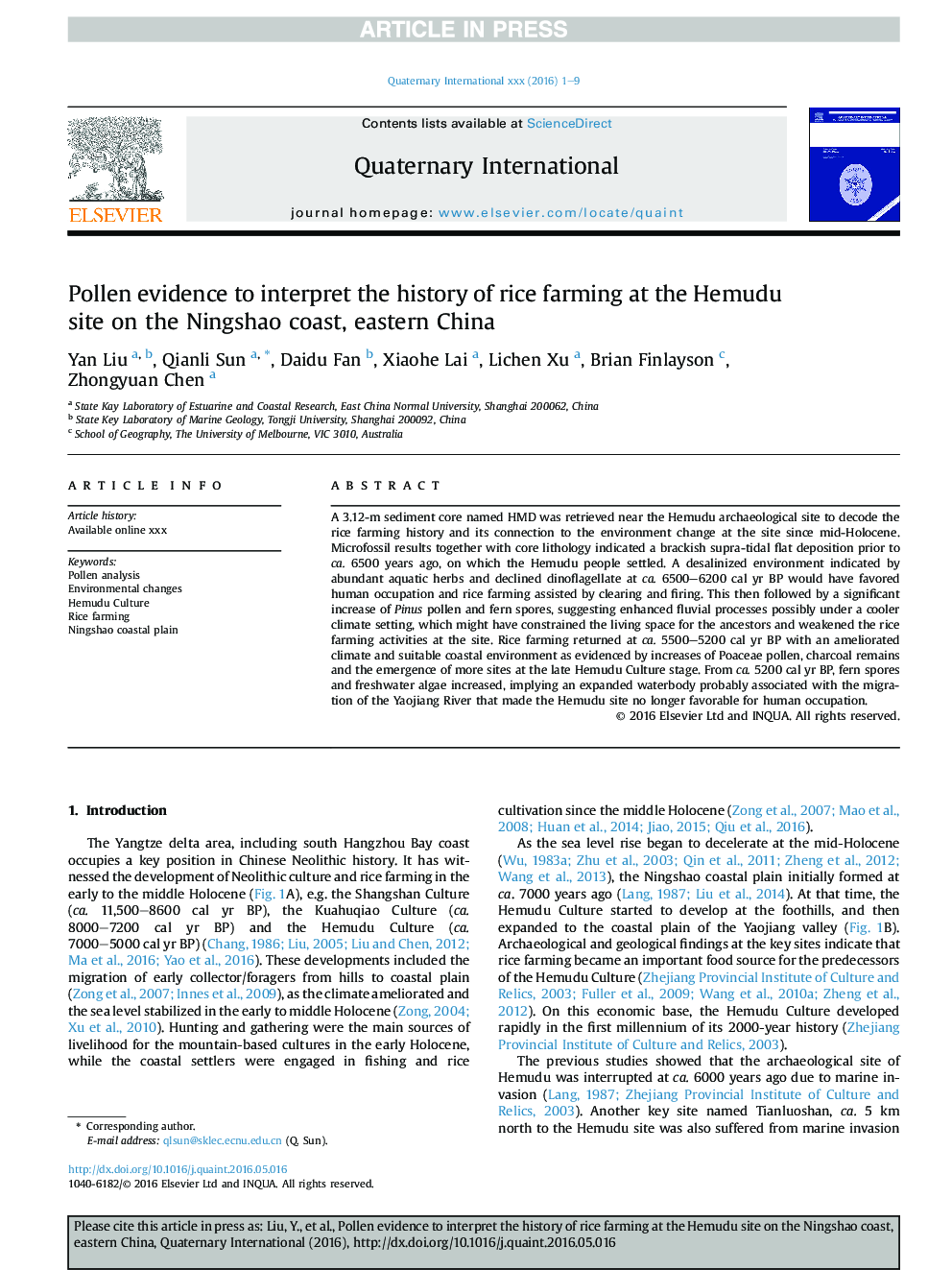| کد مقاله | کد نشریه | سال انتشار | مقاله انگلیسی | نسخه تمام متن |
|---|---|---|---|---|
| 5114122 | 1484081 | 2016 | 9 صفحه PDF | دانلود رایگان |
عنوان انگلیسی مقاله ISI
Pollen evidence to interpret the history of rice farming at the Hemudu site on the Ningshao coast, eastern China
دانلود مقاله + سفارش ترجمه
دانلود مقاله ISI انگلیسی
رایگان برای ایرانیان
کلمات کلیدی
موضوعات مرتبط
مهندسی و علوم پایه
علوم زمین و سیارات
زمین شناسی
پیش نمایش صفحه اول مقاله

چکیده انگلیسی
A 3.12-m sediment core named HMD was retrieved near the Hemudu archaeological site to decode the rice farming history and its connection to the environment change at the site since mid-Holocene. Microfossil results together with core lithology indicated a brackish supra-tidal flat deposition prior to ca. 6500 years ago, on which the Hemudu people settled. A desalinized environment indicated by abundant aquatic herbs and declined dinoflagellate at ca. 6500-6200 cal yr BP would have favored human occupation and rice farming assisted by clearing and firing. This then followed by a significant increase of Pinus pollen and fern spores, suggesting enhanced fluvial processes possibly under a cooler climate setting, which might have constrained the living space for the ancestors and weakened the rice farming activities at the site. Rice farming returned at ca. 5500-5200 cal yr BP with an ameliorated climate and suitable coastal environment as evidenced by increases of Poaceae pollen, charcoal remains and the emergence of more sites at the late Hemudu Culture stage. From ca. 5200 cal yr BP, fern spores and freshwater algae increased, implying an expanded waterbody probably associated with the migration of the Yaojiang River that made the Hemudu site no longer favorable for human occupation.
ناشر
Database: Elsevier - ScienceDirect (ساینس دایرکت)
Journal: Quaternary International - Volume 426, 28 December 2016, Pages 195-203
Journal: Quaternary International - Volume 426, 28 December 2016, Pages 195-203
نویسندگان
Yan Liu, Qianli Sun, Daidu Fan, Xiaohe Lai, Lichen Xu, Brian Finlayson, Zhongyuan Chen,